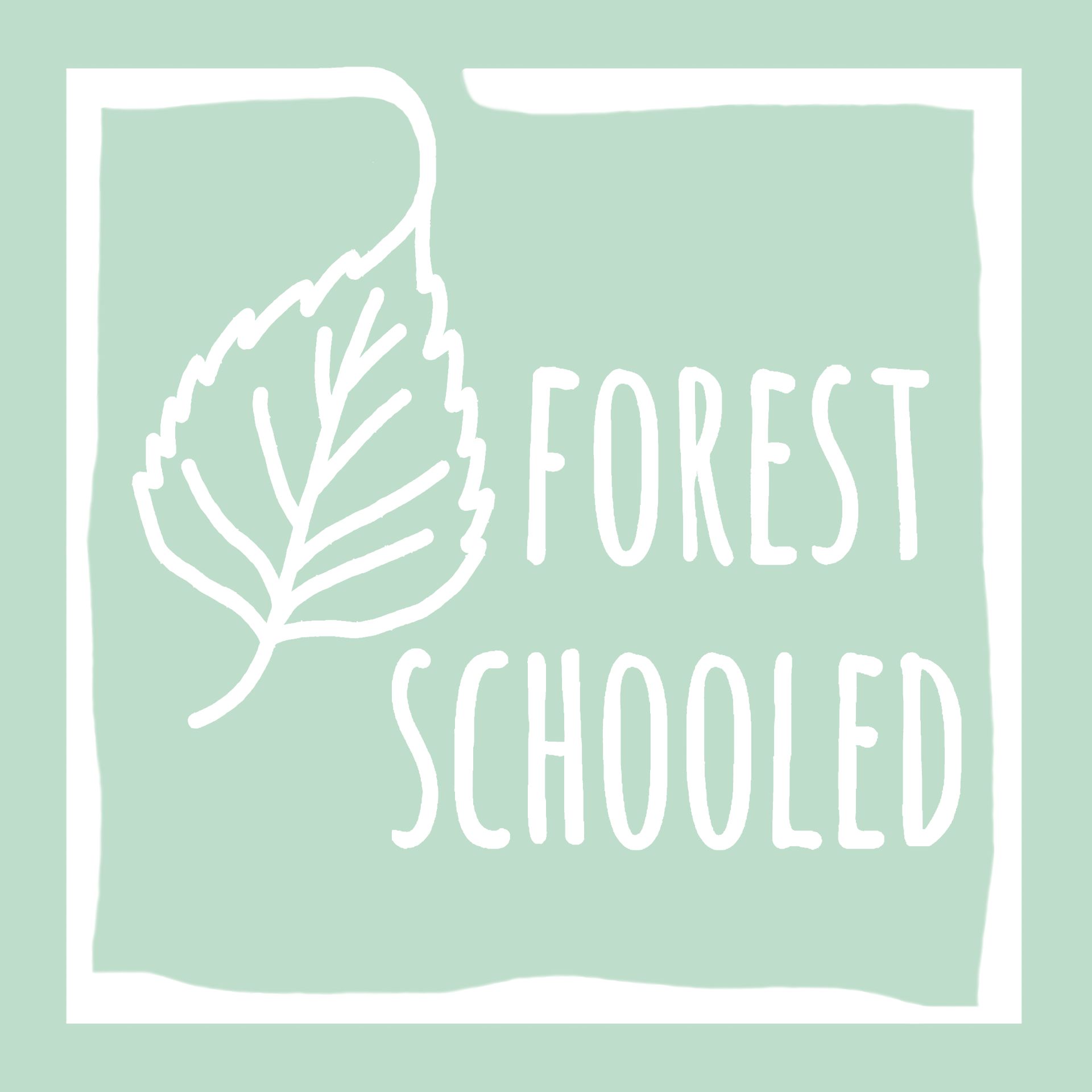
Blog
Stories from my personal journey learning about and delivering Nature-rooted programs across three different countries
Learning with storytelling...
Caylin (Forest Schooled)
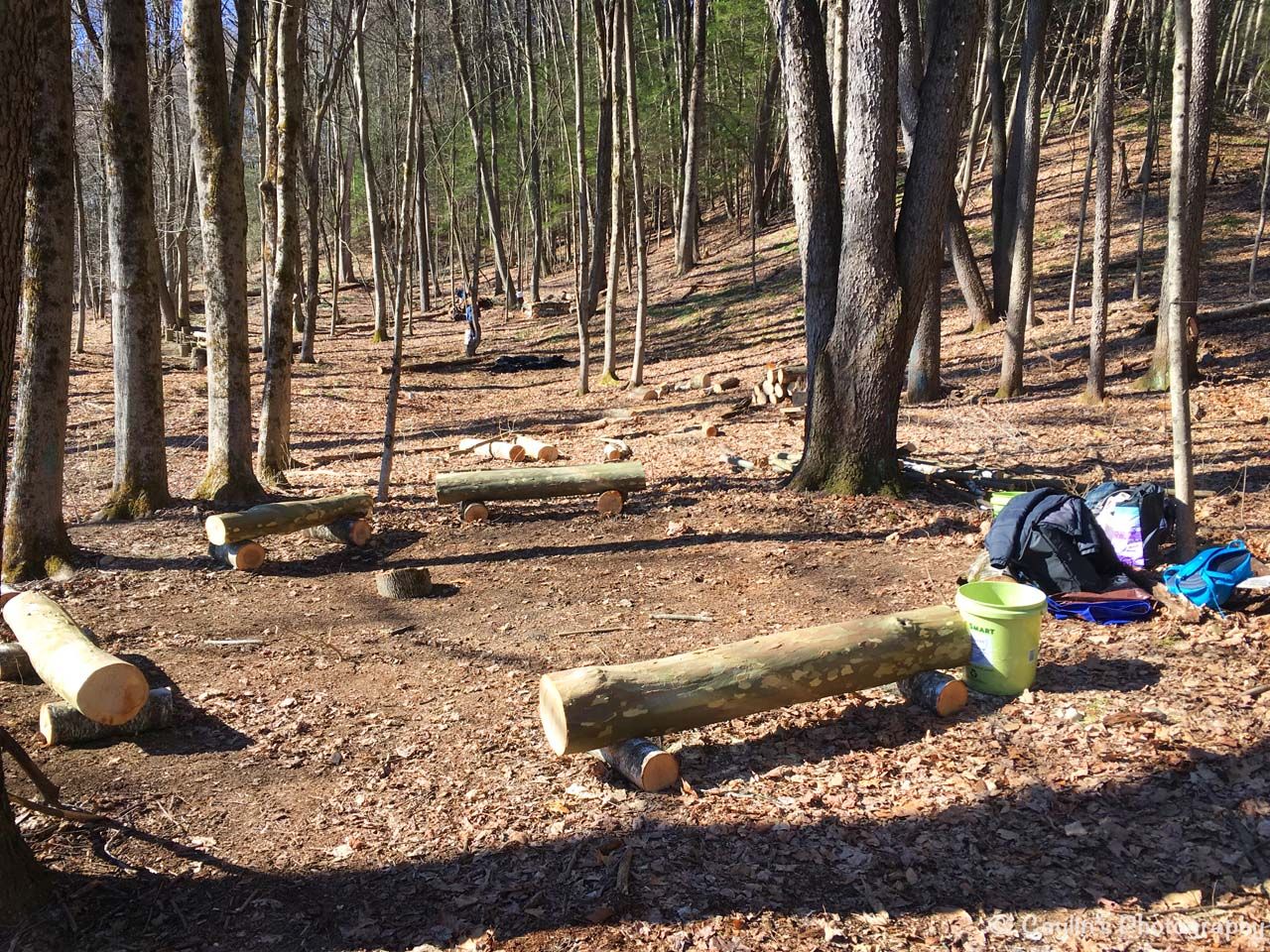
Empty space, drag to resize
Short on time? Listen to this blog post as a podcast. And subscribe to my podcast channel on Apple Podcasts, Google Podcasts, or Spotify.
I've taken a huge leap in my practice recently. I've started telling stories. Now, I know that might not sound like such a big deal, but getting up the nerve to get up in front of a group and tell a story has been a real challenge for me! If you missed it, I wrote a blog a while back about my stumbles with and admiration for storytelling. Since then, I put storytelling to the side because, to be quite honest, I found it intimidating.
I think I got wrapped up in nerves about not being able to remember all the details and the pressure of all eyes being on me. I questioned, would I be entertaining enough? I've never been very theatrical and I don't feel confident about acting out characters or changing my voice/accent to bring different characters to life. I thought that listeners might find me rather boring!
But I've always admired storytelling not only as entertainment, but as a tool for learning and inspiring creativity. It's something I've wanted to add to my toolkit for a while. So a few weeks ago, I decided... I'm just going to try it.
There was a particular situation that really pushed me to do it. Like many Forest School settings I'm sure, I introduce three main group agreements to my programs at the start. These include: Look after ourselves; Look after each other; Look after the forest. And I was noticing that despite having discussions about these group agreements and what they mean, the group was not particularly good at looking after the forest. In fact, some of the children were quite destructive, bashing shrubs, ripping leaves off trees, and tearing out or chopping off the tops of plants. They wouldn't use the parts they had dismembered for anything either, they just liked destroying things. This behavior conflicted with the values I'd hoped to instill in the group of being ecologically-minded. It also countered my ecological impact assessment and management plan. Such destructive behavior could lead to unsustainable use of the site.
Many children in the group were quite young and they were also a rowdy and excitable bunch that made group discussions already a challenge. I thought about talking about our forest school agreements with them during circle time or individually to re-emphasize the 'Look after the forest' agreement, but it felt like a very dry and didactic approach. I wanted a better way to convey the notion of conservation, sustainability, and our role/responsibility for managing our impacts.
So I made up a story!
The group was really into making shelters so I thought it would be helpful to relate the story to what they were interested in. I told the story of a boy who wanted to build a waterproof shelter, but in his eagerness he ended up destroying the very plant that would help him the most. He learned from his mistakes and was able to find a seed to make the plant grow back and took steps to nurture and care for it. The more he cared for it, the more it could thrive as well as the more resources it could provide for him to build his shelter. If you're curious about how the story went, you can download a PDF version of it below.
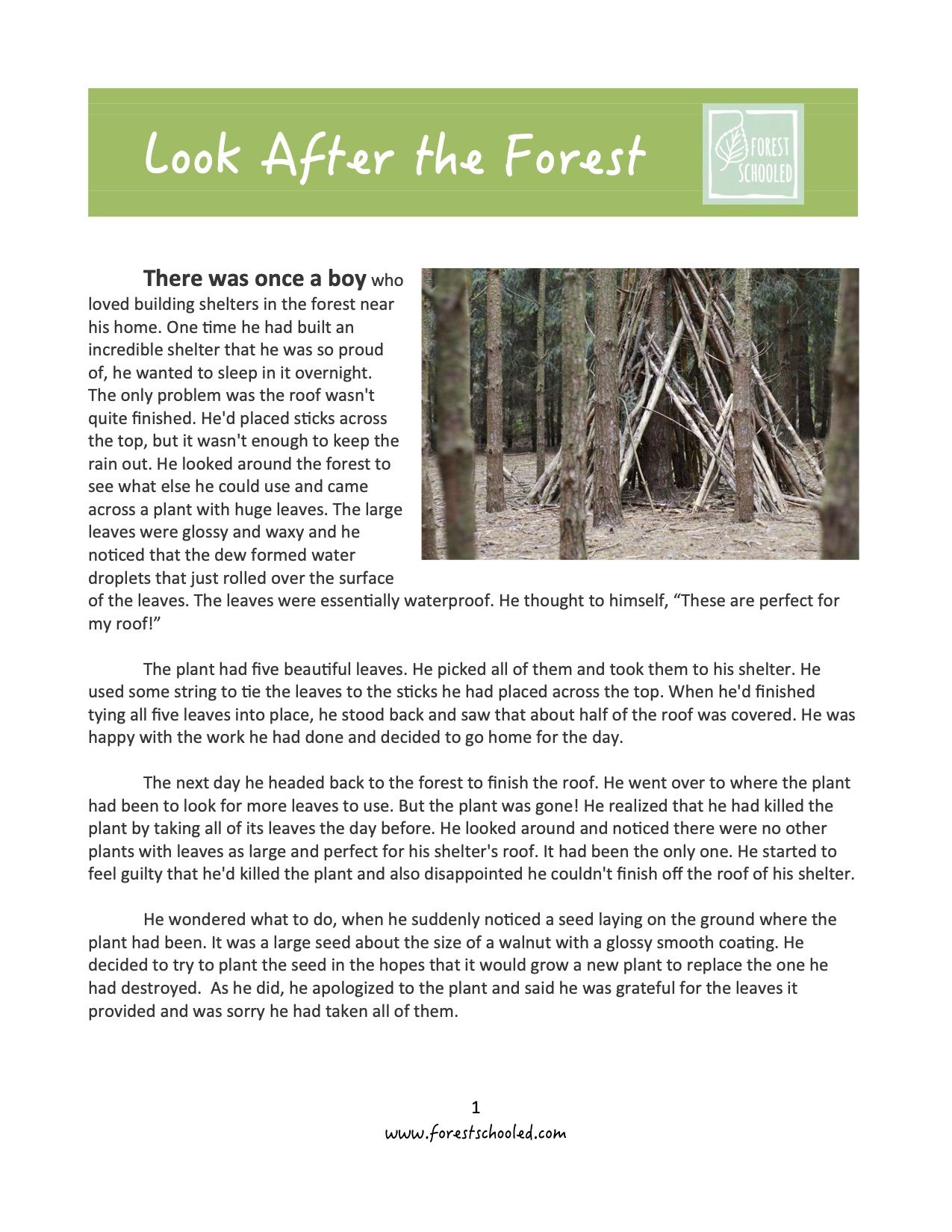
I told the story to my loud and rambunctious group, and at one point I suddenly realized they had all fallen silent as they sat looking at me and listening to my story. It was quite incredible to have such a diverse group of learners be so focused and engaged (and quiet!!) all at the same time. I didn't realize I had the ability to create that! It was quite a triumph. Then my story went on a little too long and I lost the attention of some of the younger ones towards the end... but nevertheless, I got the main point across and learned a few things about how to do it better the next time!
When the story finished, the children went off to play as they normally did. As they explored some children came running back to me excitedly announcing that they had found a plant like the one in the story! With huge leaves! And they'd even found a seed beside it! That encouraged me even more - not only had the story communicated a 'lesson', it had inspired and influenced their play... Quite powerful when you stop to think about it.
The experience led me to tell a story at each subsequent session. I decided I enjoyed creating my own stories because it makes me feel less pressure to remember all the details and helps eliminate my own fears about 'not telling it as well as someone else did'. It also means I can really tailor the story to the interests and context of the group.
For example, in addition to shelter making, the group was really into imaginary play about Bigfoot. They would go on Bigfoot hunts and try to make traps to catch him. So the next session I told a story about Bigfoot. I included details that would get them thinking about traces and evidence a Bigfoot (and other animals) might leave behind and how to track them. A good portion of their play after that story involved looking for signs of Bigfoot. They found nibbled acorns, tufts of 'fur', and other evidence, just like the character had in the story...
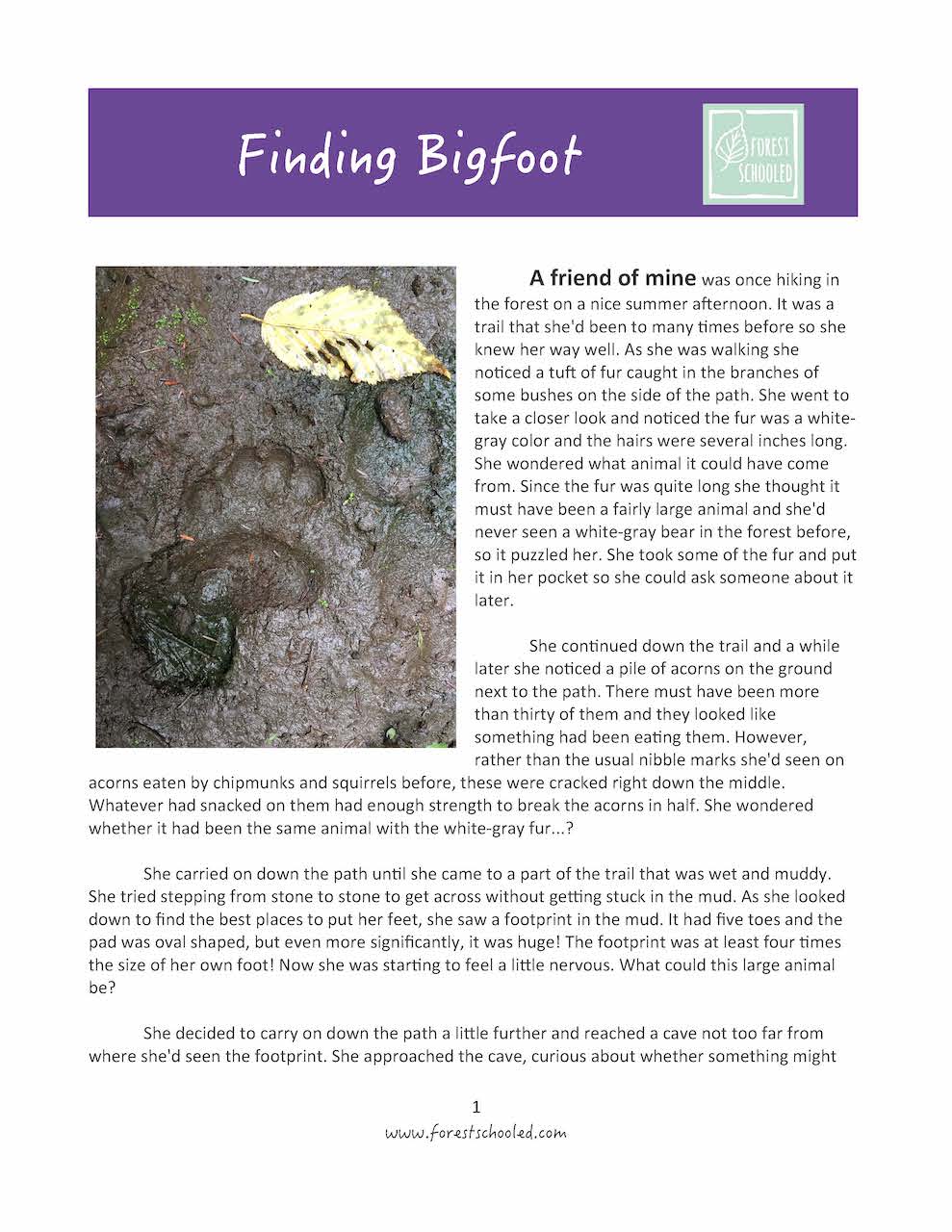
The following session was the last one for some of the children so I wanted to give them a little gift as a token of the time we'd spent together. We'd done a lot of exploring at a stream near the site where there were lots of sparkly stones that I thought would be a nice item for each child to take home. I'd also noticed that the children had enjoyed playing some hiding, sneaking, and chasing games and wanted to think of a story that could incorporate both the stones and the games.
A story of a shiny-thing-loving dragon named Morton is what emerged! I even brought along a bag full of stones collected from the stream as a prop. When the story finished, each child picked a stone from the bag to take home. Next I introduced a hiding/sneaking game called 'dragons eyes' (I've also heard it called 'Come closer" or 'Camouflage' - there's lots of versions of the game). The children loved it.

The final session the following week, I decided to base the story on an event that had happened the week before. While playing near some trees the children had discovered a snake. It was quite exciting for everyone to see and peaked their curiosity about snakes. One of the children identified it as a ribbon snake, so I decided to create a story about that... I also brought ribbons along to that session which inspired a variety of crafts using ribbons and sticks afterwards.
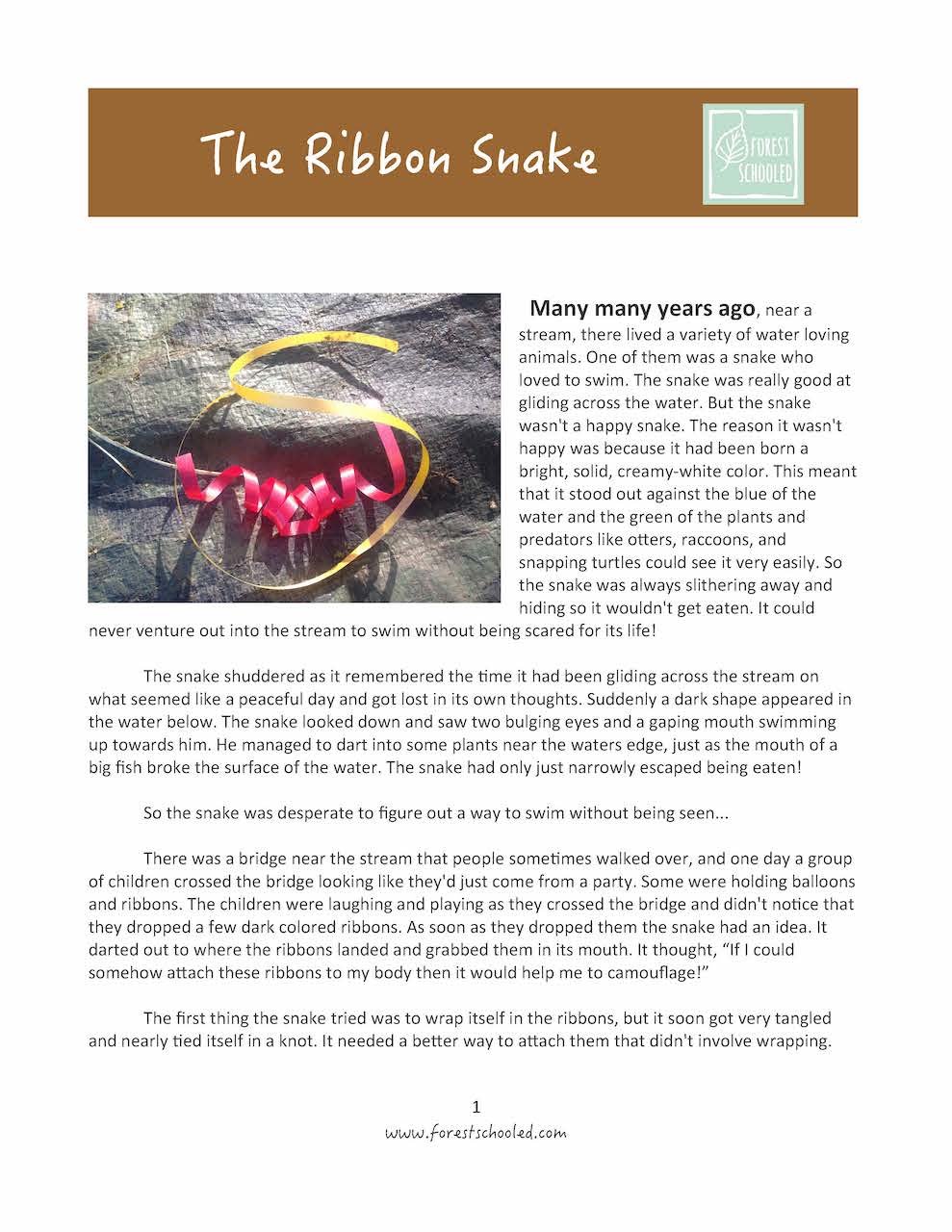
So, now I've officially told four stories and I noticed how my confidence grew a little bit with each one. I know the skill will continue to get better with practice and so I feel inspired to carry on with integrating storytelling into future programs. It's a phenomenal tool to have as a practitioner as a means to inspire learning, encourage creativity and imagination, and build a sense of community.
I hope by sharing these stories through this blog post, they might come in handy for someone else. Feel free to tweak and change (and improve) them to suit your group and context if you wish. I'd also love to hear of other storytelling journeys and/or good stories that you use with your groups! Send me a message at forestschooled@gmail.com.
Thanks and happy storytelling!
More Posts
WANT TO GET FOREST SCHOOLED TOO?
Subscribe to my email letters, something special from me to you so we can learn together. Each one is filled with heart-felt stories from the forest, resources you may find useful, and things that hopefully bring a smile too.
Thank you!
© by FOREST SCHOOLED
